News
Putting the Mansion to Bed: Winter Conservation
Over the winter months, country houses like Stowe were traditionally ‘put to bed.’ Their families would leave their summer palaces and return to London for the ‘season’ of soirées, balls, and the bustling marriage market.
January 30, 2025
Over the winter months, country houses like Stowe were traditionally ‘put to bed.’ Their families would leave their summer palaces and return to London for the ‘season’ of soirées, balls, and the bustling marriage market. These events, which flourished in the eighteenth century, coincided with parliamentary sessions of the time. While we no longer throw covers over furniture or shutter the windows completely, we do adjust our opening times during the late winter period to reflect the reduced number of visitors on cold, damp days. This quieter period allows us to focus on essential conservation work, including the meticulous cleaning and preservation of the collections housed in the museum.
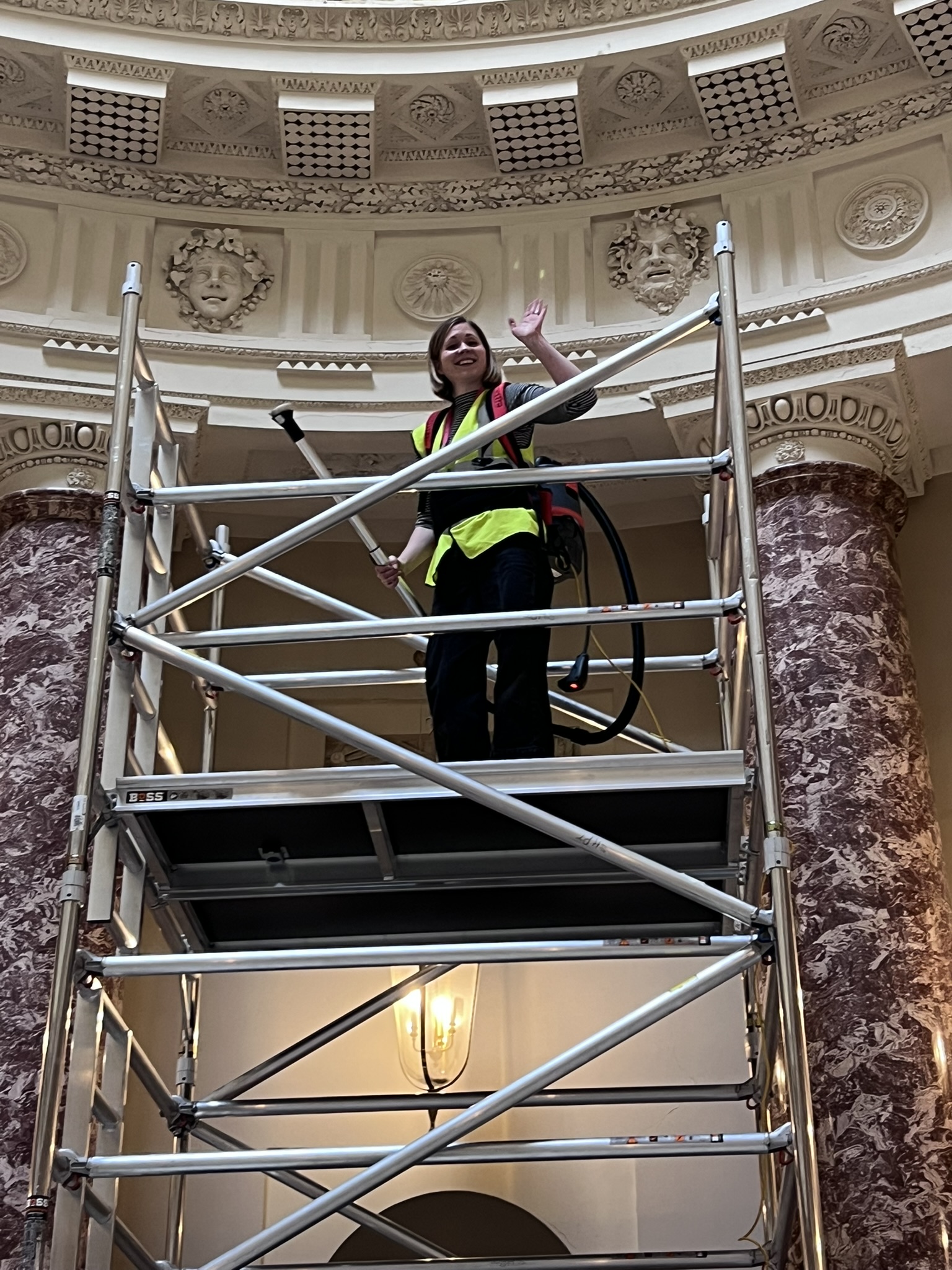
Every winter, we carefully open the museum display cases to carry out conservation cleaning on the objects. Where possible, items are removed and inspected for signs of deterioration. Using a soft pony-hair brush, we gently remove dust, which is immediately vacuumed away. Left unchecked, dust can ‘cement’ on to surfaces under certain environmental conditions, making its removal more abrasive and potentially damaging. Dust can also become a food source for mould and pests, further endangering these precious items.
Our conservation efforts extend beyond the museum to include the State Rooms. Here, the cleaning process follows a similar method but on a grander scale. We begin by inspecting walls and ceilings for damage. Scaffolding allows us to closely examine all areas, and we use a backpack vacuum (imagine Ghostbusters, minus the boiler suit) equipped with a soft goat-hair attachment to gently remove dust and cobwebs from fragile gilded plasterwork. Chandeliers, sculptures, paintings, and fireplaces are also thoroughly cleaned and inspected. This annual ‘winter clean’ ensures we can address superficial issues and identify potential leaks or structural repairs that may need attention in the future.
Another key part of our conservation strategy is protecting the collection from light damage caused by UV radiation. During the 25-year restoration of the mansion, UV film was applied to the windows of south-facing rooms along the piano nobile. This film helps prevent UV light from breaking down delicate surfaces. However, over time, the effectiveness of the film diminishes. Recent light readings in the Music Room, taken with an Elsec monitor, showed levels close to 100 lux. For reference, readings over 75 lux suggest the UV film is failing, and an unfiltered sunny room can reach as high as 2,000 lux.
Given the sensitive nature of Valdre’s wall paintings in the Music Room, we decided to replace the ageing UV film with a more advanced version. The new film still filters out 99.5% of UV light but is slightly tinted to reduce visible light, which, while less harmful than UV, still causes gradual damage. This film also reduces glare, blocks 42% of solar energy, and helps stabilise the room’s relative humidity, preventing issues like splitting wood or cracking plaster and paintwork. Incidentally, the same company also supplies Buckingham Palace with window film!
Removing the old film has been a slow, painstaking process. Baked onto the windows in places, it must be carefully scraped off using a glass scraper. Applying the new film is equally meticulous work, as it must be precisely cut in situ to avoid visible gaps. We plan to complete the remaining stages of removal and installation during school holidays, ensuring minimal disruption.
By making the most of these quieter winter months, we’re able to preserve Stowe’s treasures for future generations while ensuring the mansion is ready to welcome visitors as the warmer seasons approach.
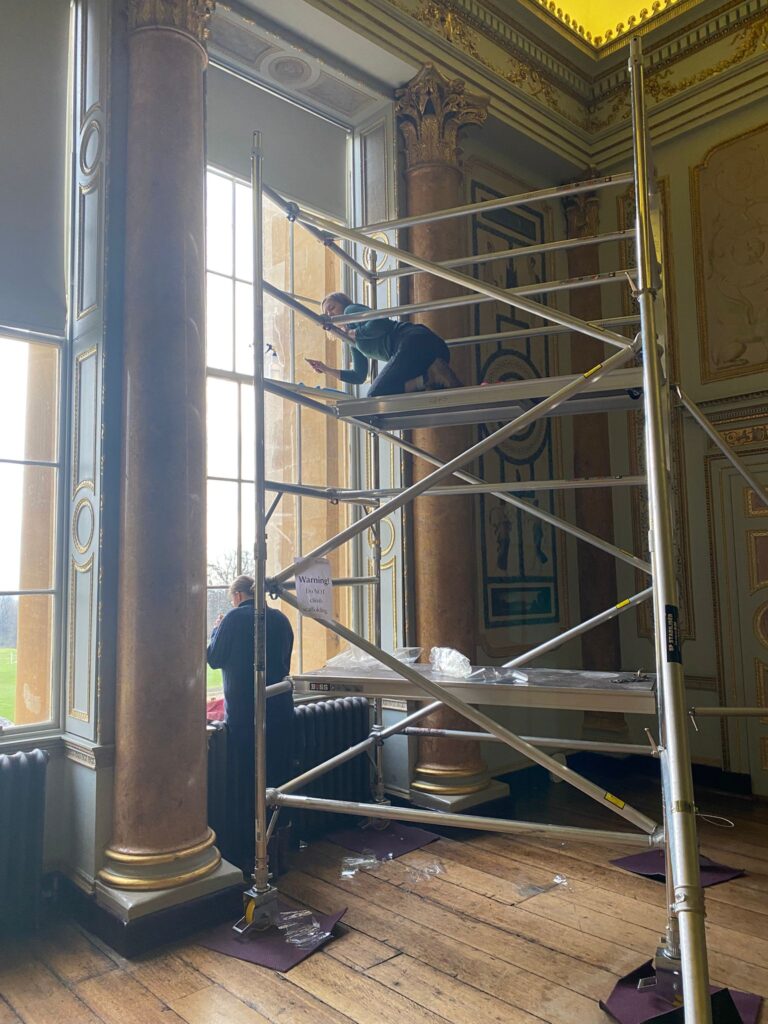
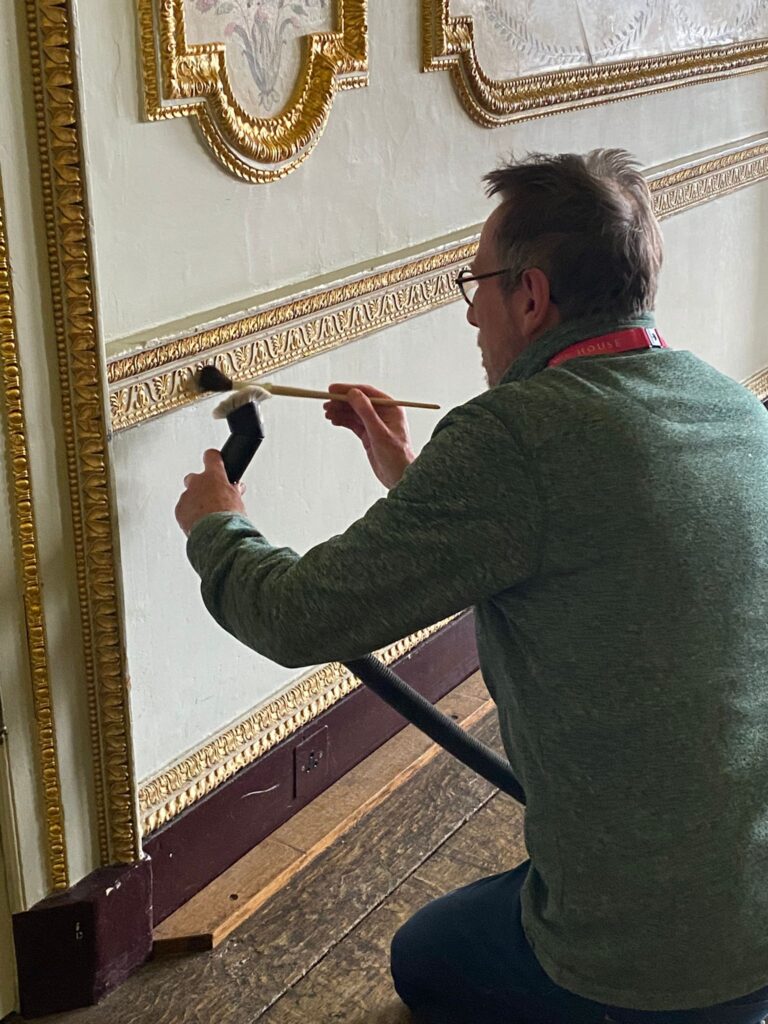
Robyn Newman-Boffey, Assistant House Custodian
Other news you may be interested in
Read all news-
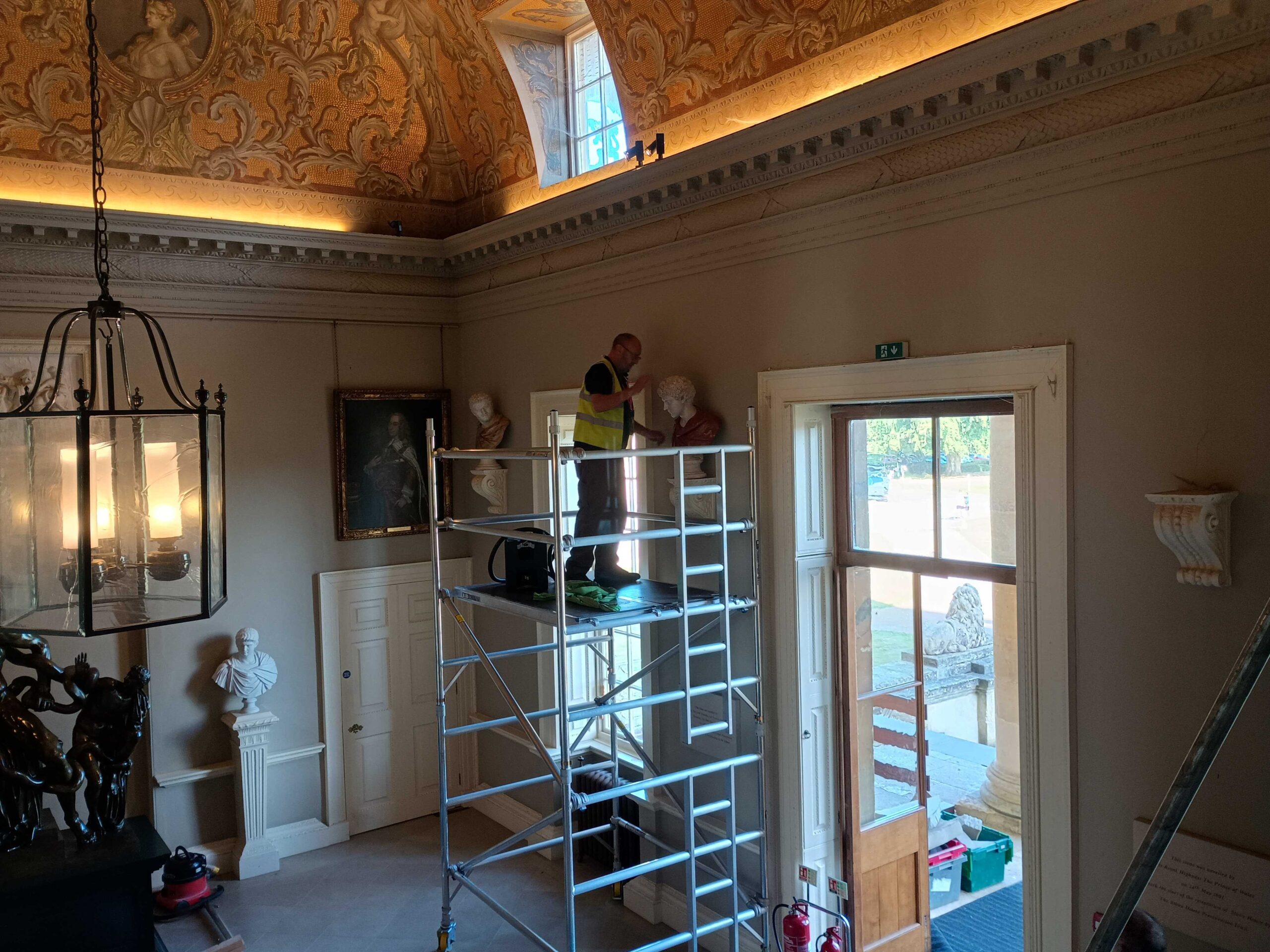
Classical Busts Return to Stowe House’s North Hall After 200 Years
Stowe House is celebrating the completed restoration of its grand North Hall — a spectacular reception room first designed in the 1730s by William Kent. As the final touch to a six-year, £75,000 restoration, nine classical busts have been installed.
18 August 2025
-

An 18th-Century Treasure Joins Our Collection: Silver Waiter with Historic Links
Much of our collection has been on a journey and tales to tell. Read about our latest acquisition expected to arrive this autumn.
22 July 2025
-
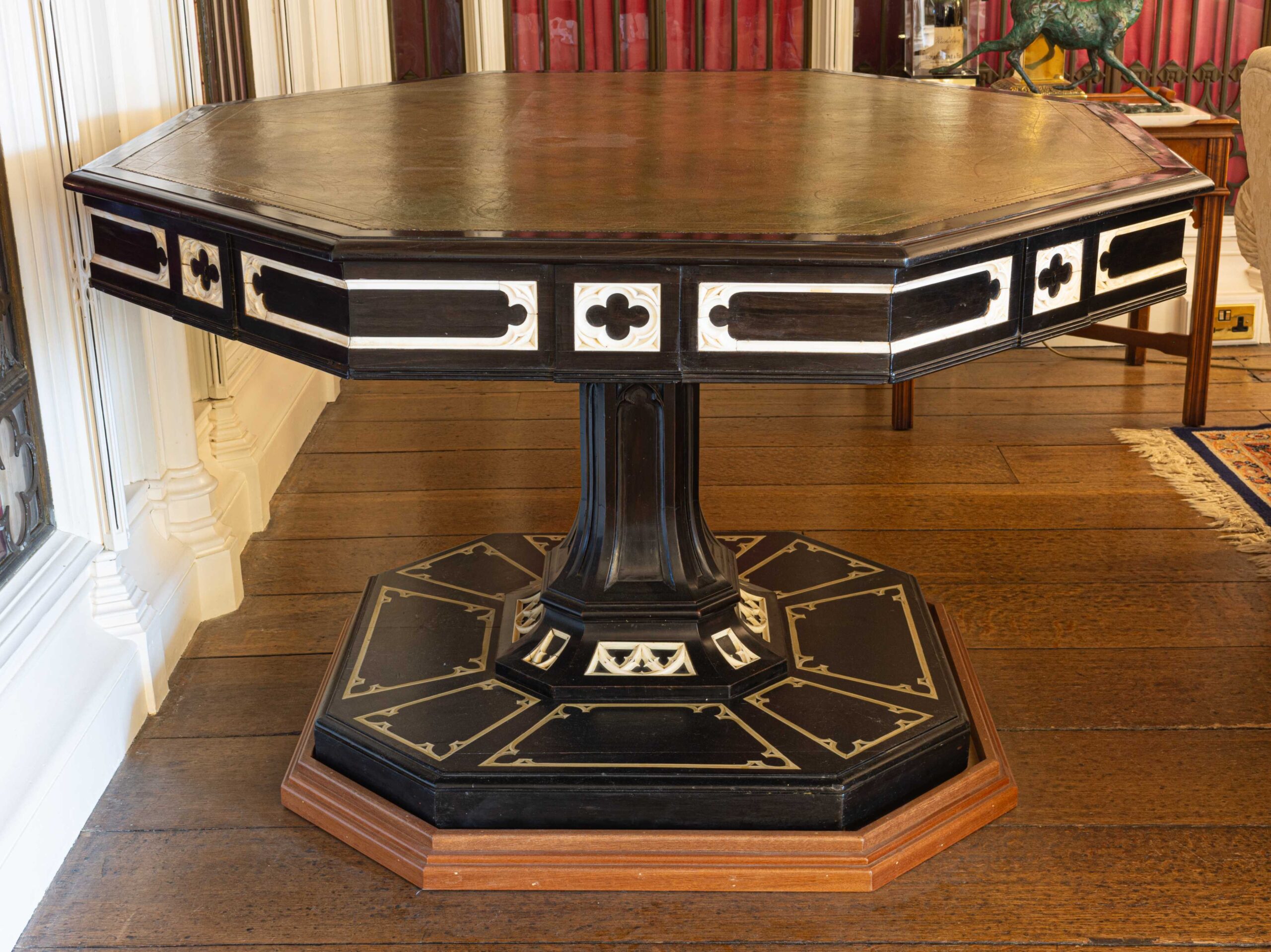
The Soane Table Comes Home (Officially!)
After seven years on loan, the Sir John Soane octagonal table has been formally gifted to Stowe House by Brighton & Hove Museum. Designed in 1805 for the Gothic Library, this rare piece is now permanently reunited with its matching side table in its original setting.
1 July 2025